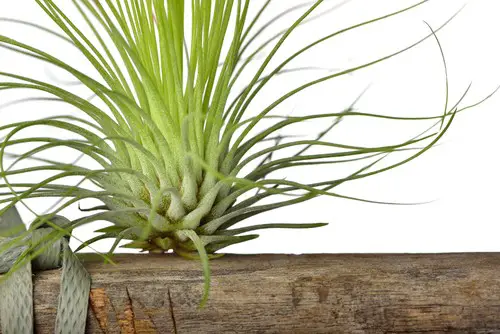Air plants are unique and fascinating plants that have become increasingly popular in recent years due to their low maintenance and stunning appearance. These plants are known for their ability to survive without soil, making them an attractive option for those who want to add some greenery to their homes without the hassle of traditional plant care.
However, one common issue that air plant owners may face is air plant leaves turning brown. This can be a cause for concern, but it is important to understand the reasons behind it and how to address the problem.
Understanding air plants is key to preventing and addressing brown leaves. Air plants, or Tillandsia, are epiphytes, which means they grow on other plants or objects instead of in soil. They absorb water and nutrients through their leaves, making them highly adaptable to different environments.
However, this also means that they are sensitive to changes in their surroundings, which can lead to browning leaves. There are several reasons why air plant leaves may turn brown, including underwatering, overwatering, improper lighting, and low humidity levels.
If left untreated, brown leaves can be a sign of a dying air plant. It is important to recognize the signs and symptoms of a dying air plant, such as wilting, discoloration, and a lack of new growth.
However, with proper care, it is possible to revive a brown air plant and prevent further browning. This article will explore the reasons behind air plant leaves turning brown, how to revive a brown air plant, and tips for preventing browning in the future.
Key Takeaways
- Air plants are epiphytes that absorb water and nutrients through their leaves, making them highly adaptable but sensitive to changes in their environment.
- Brown leaves can be a sign of a dying air plant, but with proper care, it is possible to revive a brown air plant and prevent further browning.
- To prevent browning in air plants, it is important to provide proper watering, lighting, and humidity levels, and to avoid common mistakes in air plant care.
Check out these other related posts:
Understanding Air Plants
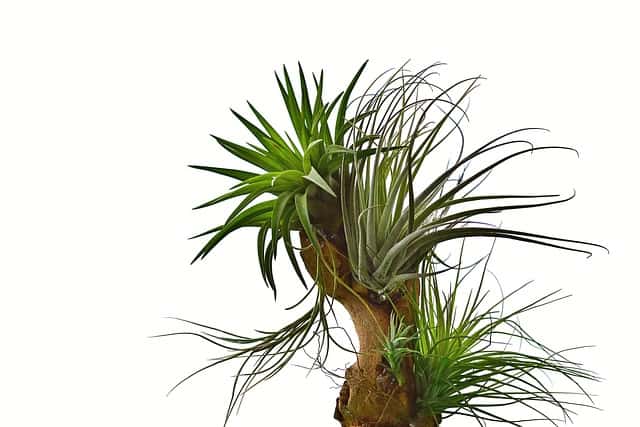
1. What are Air Plants?
Air plants, also known as Tillandsia, are a type of epiphyte plant that belongs to the Bromeliaceae family. Unlike other plants, they do not require soil to grow. They are called air plants because they absorb nutrients and moisture from the air through their leaves.
Air plants are native to Central and South America, Mexico, and the southern United States. They are popular among gardeners because of their unique appearance and easy care requirements.
2. Species of Air Plants
There are over 650 species of air plants, each with its own unique characteristics and requirements. Some of the most common species include Tillandsia ionantha, Tillandsia stricta, and Tillandsia xerographica.
The size of air plants varies from a few centimeters to over a meter in length. They come in a range of colors, from green to silver, and some species have colorful flowers that bloom once or twice a year.
3. Air Plants in Natural Habitat
In their natural habitat, air plants grow on trees, rocks, and other surfaces. They use their roots to anchor themselves to these surfaces, but they do not absorb nutrients from them. Instead, they rely on the surrounding air to provide them with the nutrients they need to grow.
Air plants are adapted to survive in harsh environments, such as deserts and rainforests. They are able to tolerate high temperatures, low humidity, and strong winds.
Why Are My Air Plant Leaves Turning Brown? 5 Common Problems
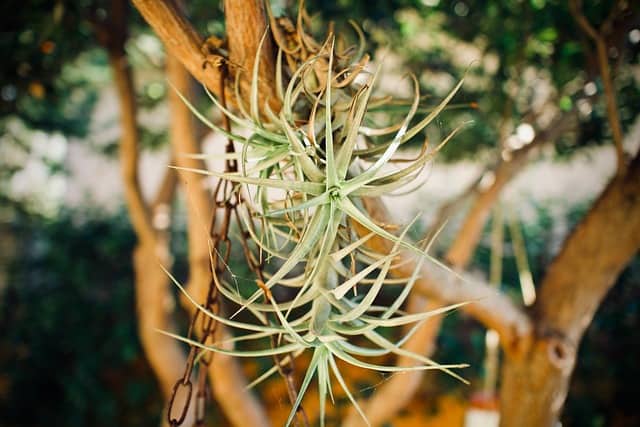
Air plants are known for their unique appearance and easy maintenance. However, one common issue that air plant owners face is brown leaves. Brown leaves can be caused by various factors, including overwatering, underwatering, lack of proper lighting, inadequate air circulation, dehydration, and chemical exposure.
1. Overwatering and Underwatering
Overwatering and underwatering are two of the most common reasons why air plant leaves turn brown. Overwatering can cause the roots to rot, leading to brown leaves that feel mushy to the touch. On the other hand, underwatering can cause dry, brown leaves that feel papery to the touch.
To prevent overwatering, it is important to allow the plant to dry out completely between waterings. To prevent underwatering, it is important to water the plant thoroughly and regularly.
2. Lack of Proper Lighting
Air plants require bright, indirect light to thrive. Direct sunlight can cause the leaves to burn and turn brown. On the other hand, insufficient lighting can cause the leaves to turn yellow and eventually brown. It is important to find a spot that provides the right amount of light for your air plant.
3. Inadequate Air Circulation
Air plants require good air circulation to prevent the buildup of moisture, which can lead to brown leaves. It is important to provide adequate ventilation by placing the plant in a well-ventilated area or using a fan to circulate the air.
4. Dehydration
Dehydration can also cause air plant leaves to turn brown. This can happen when the plant is exposed to dry air or when it is not watered enough. To prevent dehydration, it is important to mist the plant regularly and to water it thoroughly when it is dry.
5. Chemical Exposure
Air plants can be sensitive to chemicals in the environment, such as chlorine in tap water or chemicals in cleaning products. These chemicals can cause the leaves to turn brown or even die. It is important to use clean, filtered water and to avoid exposing the plant to chemicals.
Signs and Symptoms of a Dying Air Plant

Air plants are known for their hardiness and ease of care, but sometimes they can experience problems that lead to their demise. It’s important to know the signs and symptoms of a dying air plant so that you can take action to save it. Here are some common signs to look out for:
1. Brown Leaves
One of the most common signs of a dying air plant is brown leaves. If your air plant’s leaves are turning brown, it could be a sign of underwatering, overwatering, or a lack of humidity.
To determine the cause of the problem, check the soil moisture and the environment where the plant is located. If the soil is dry and the air is dry, your air plant may need more water or humidity.
2. Mushy Leaves
Mushy leaves are another sign that your air plant is in trouble. This can be caused by overwatering or a lack of air circulation. If your air plant’s leaves feel soft and mushy, remove it from its container and inspect the roots. If the roots are brown and mushy, you may need to trim them and repot the plant in fresh soil.
3. Brown Tips
Brown tips on the leaves of your air plant can be a sign of several problems. It could be due to underwatering, overfertilization, or exposure to direct sunlight. To fix the problem, adjust the watering schedule, reduce the amount of fertilizer you use, or move the plant to a location with indirect sunlight.
4. Curling Leaves
If the leaves of your air plant are curling, it could be a sign of drought stress. This can happen when the plant is not getting enough water or humidity. To fix the problem, increase the frequency of watering and misting. You can also try placing a tray of water near the plant to increase the humidity in the air.
How to Revive a Brown Air Plant
If you notice that your air plant leaves are turning brown, there are several things you can do to revive your plant and bring it back to its former glory. Here are some tips to help you get started.
1. Correct Watering Techniques

One of the most common reasons why air plant leaves turn brown is improper watering. To keep your air plant healthy, it’s important to water it correctly. Soaking your air plant in water for 30 minutes once a week is recommended.
You can also mist your air plant two to three times a week if it’s in a dry environment. It’s important to avoid overwatering, as this can lead to root rot and other problems.
2. Proper Lighting
Another factor that can cause air plant leaves to turn brown is improper lighting. Air plants need bright, indirect sunlight to thrive. Direct sunlight can cause the leaves to burn, while too little light can cause the plant to become weak and unhealthy.
If you notice that your air plant is not getting enough light, you can move it to a brighter location or provide supplemental lighting.
3. Adequate Air Circulation
Air plants need good air circulation to thrive. If your air plant is in a location with poor air circulation, it can lead to problems such as mold, mildew, and other issues. To improve air circulation, you can move your air plant to a location with better airflow or use a fan to circulate the air around your plant.
4. Fertilization
Fertilization can also help to revive a brown air plant. Air plants don’t need a lot of fertilizer, but a small amount can help to provide the nutrients they need to thrive. Use a water-soluble fertilizer once a month during the growing season to help your air plant stay healthy and green.
By following these tips, you can help to revive a brown air plant and keep it healthy and beautiful for years to come. Remember to always provide your plant with the proper care and attention it needs to thrive.
Preventing Browning in Air Plants
Air plants are a popular choice for indoor plants because of their unique and easy-to-care-for nature. However, one of the most common problems that air plant owners face is browning leaves. Brown leaves can be an indication of various issues, including improper watering, unsuitable lighting, low humidity levels, or incorrect location.
1. Proper Watering
One of the most important factors in preventing browning in air plants is proper watering. Air plants absorb water through their leaves, so it is essential to give them a good soak every week or two.
The best way to water air plants is to soak them in water for 10-15 minutes, then let them dry completely before returning them to their display location. Overwatering or not providing enough water can cause the tips of the leaves to dry out and turn brown.
2. Suitable Lighting
Air plants require bright, indirect sunlight to thrive. Direct sunlight can scorch the leaves, causing them to turn brown. Therefore, it is best to place air plants in a spot with bright, indirect sunlight, such as near a window with a sheer curtain or on a bright shelf.
3. Ideal Humidity Levels
Air plants are native to tropical regions and require high humidity levels to stay healthy. A lack of humidity can cause the tips of the leaves to dry out and turn brown.
To prevent this, it is essential to keep the air around air plants humid. This can be achieved by misting the leaves with water once or twice a week, placing a tray of water near the plants, or using a humidifier.
4. Right Location
The location of air plants is also crucial in preventing browning. Air plants should be placed in a location with good air circulation, but not in a drafty area. They should also be kept away from direct heat sources, such as radiators or vents, which can dry out the leaves and cause them to turn brown.
By following these simple tips, air plant owners can prevent browning and keep their plants healthy and beautiful.
Common Mistakes in Air Plant Care
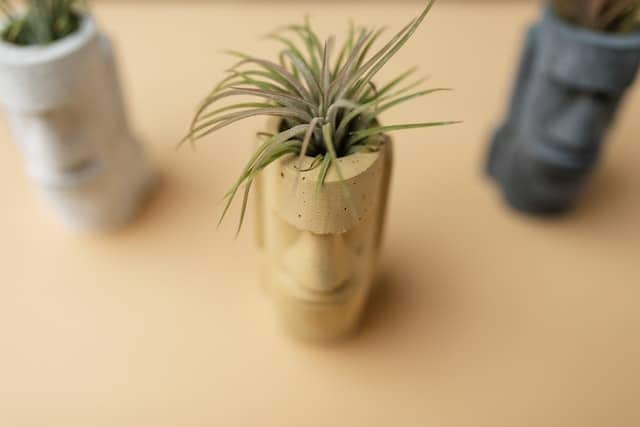
Air plants are low-maintenance plants that are easy to care for, but even the best plant parents can make mistakes. Here are some common mistakes to avoid when caring for air plants:
1. Overwatering
Overwatering is one of the most common mistakes people make when caring for air plants. Air plants absorb moisture through their leaves, so they don’t need to be watered as often as other plants. Overwatering can lead to root rot and brown, mushy leaves. To avoid overwatering, let the plant dry out completely between waterings.
2. Excessive Direct Sunlight
Air plants prefer bright, indirect light, but too much direct sunlight can cause their leaves to turn brown and dry out. If you notice your air plant’s leaves turning brown, move it to a spot with less direct sunlight.
3. Inadequate Humidity
Air plants thrive in humid environments, but many homes have dry air. If the air in your home is too dry, your air plant’s leaves may turn brown and curl up. To increase humidity, you can mist your air plant with water or place it in a humid room, such as a bathroom.
4. Wrong Location
Air plants can be placed in a variety of locations, but some locations are better than others. Avoid placing your air plant near air conditioning or heating vents, as the hot or cold air can dry out the plant. Also, avoid placing your air plant in a spot with too much air movement, as this can also dry out the plant.
By avoiding these common mistakes, you can ensure that your air plant stays healthy and vibrant. Remember to give your air plant the care it needs to thrive, and it will reward you with its unique beauty.
Air Plant Care in Different Seasons
Air plants require different care depending on the season. Proper care is essential to keep the leaves from turning brown or falling off. Here are some tips for caring for air plants in different seasons.
1. Winter Care
During the winter months, air plants need extra care to survive. The cold and dry air can cause the leaves to dry out and turn brown. To prevent this, it is essential to keep the air plant in a warm and humid environment.
One way to increase humidity levels is to mist the air plant regularly. It is also helpful to place a tray of water near the air plant to increase moisture in the air. Another option is to use a humidifier to keep the air moist.
Direct sun can also be harmful to air plants during the winter months. It is best to keep them in a bright, indirect light location. If the air plant is near a window, it should be shielded from direct sunlight.
2. Summer Care
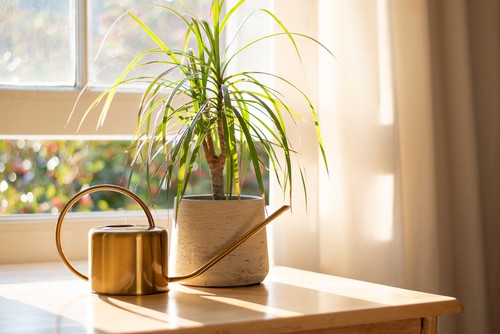
During the summer months, air plants need more water than usual. The heat and dry air can cause the leaves to dry out and turn brown. To prevent this, it is essential to soak the air plant in water for at least 20 minutes once a week.
It is also important to keep the air plant in a bright, indirect light location. Direct sunlight can cause the leaves to scorch and turn brown.
In addition to regular watering, misting the air plant regularly can help increase humidity levels. It is also helpful to place a tray of water near the air plant to increase moisture in the air.
Overall, taking proper care of air plants in different seasons is essential to keep the leaves from turning brown or falling off. By following these tips, air plant owners can enjoy healthy and vibrant plants all year round.
Frequently Asked Questions
Why are my air plant leaves turning brown?
Air plant leaves can turn brown due to a variety of reasons. One common cause is exposure to direct sunlight or overly dry conditions. Air plants should be kept in a spot with bright, indirect light, and should be watered regularly to maintain their health.
How can I tell if my air plant is overwatered?
Overwatering can cause air plant leaves to turn brown or black and feel mushy. If the leaves are falling off easily or the plant looks wilted, it may be overwatered. To prevent overwatering, allow the plant to dry out completely between watering sessions.
What are the signs of an underwatered air plant?
An underwatered air plant may have leaves that are dry, curled, or crispy. The leaves may also turn brown or yellow. To prevent underwatering, water the plant thoroughly and regularly, but ensure that the plant is not left sitting in standing water.
How do I revive a dying air plant?
If an air plant is dying, there are a few steps that can be taken to revive it. First, ensure that the plant is getting enough light and water. If the plant is overwatered, allow it to dry out completely before watering again. If the plant is underwatered, water it thoroughly and regularly. Additionally, removing any dead or brown leaves can help the plant to recover.
Is it necessary to remove brown leaves from air plants?
While it is not necessary to remove brown leaves from air plants, doing so can help to improve the plant’s appearance and overall health. Dead or brown leaves can be removed by gently pulling them off the plant.
Can a brown air plant be saved?
In some cases, a brown air plant can be saved by following the steps outlined above. However, if the plant is severely damaged or has been brown for an extended period of time, it may not be possible to save it.

Hey, I’m Lisa and I’ve been an avid gardener for over 30 years. I love writing, talking and living in the garden! Feel free to connect with me on my socials below

